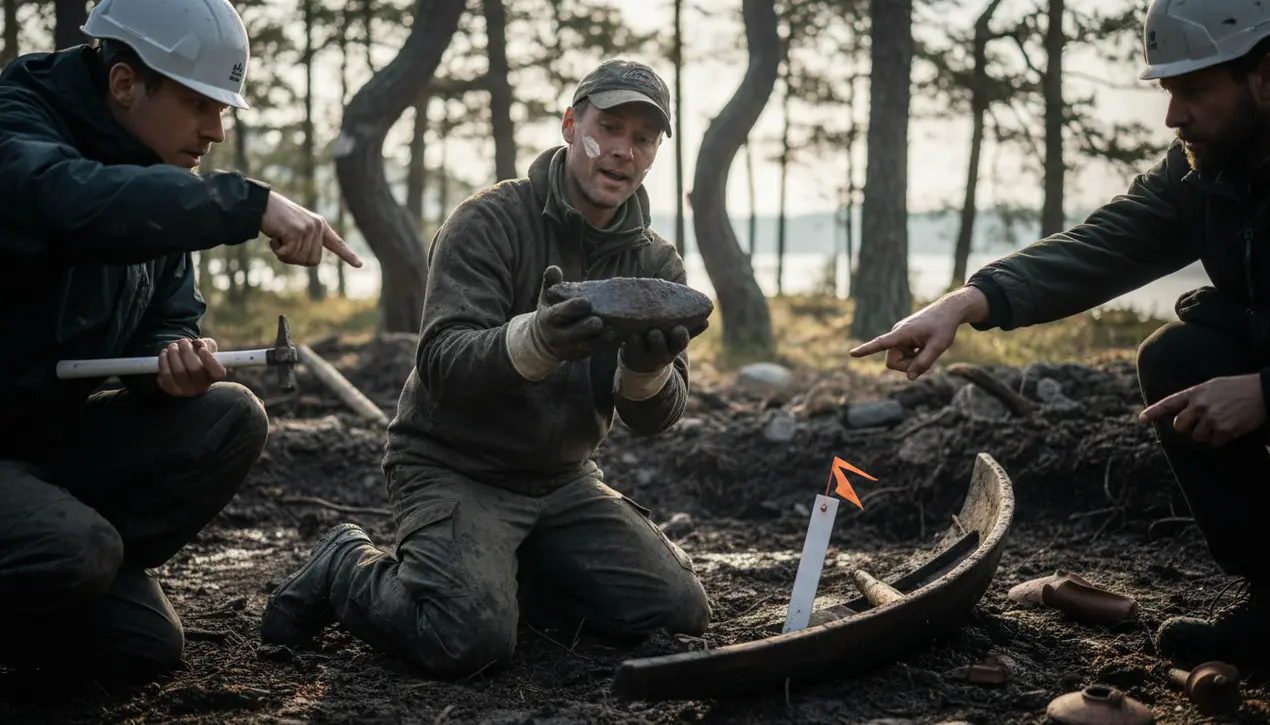
SciencearchaeologyExcavations and Discoveries
A mysterious metal find in Sweden is rewriting Iron Age history
TH
Thomas Green
3 hours ago7 min read
The quiet fields of Sweden, long thought to hold the settled secrets of Scandinavia's past, have yielded a discovery that is fundamentally recalibrating our understanding of the Iron Age. A single, unassuming plano-convex ingot, initially cataloged as a relic from the preceding Bronze Age, has been thrust into the scientific spotlight, its true identity unlocked through rigorous chemical and isotopic analysis.This metallic sleuthing revealed a startling truth: the artifact belongs squarely to the Iron Age, a period from roughly 500 BCE to 800 CE. But the plot, as they say, thickened considerably.The ingot’s unique metallic fingerprint—a specific blend of trace elements and lead isotopes that acts like a geological signature—didn't point to local Scandinavian ores. Instead, it presented an almost perfect match with contemporaneous Iron Age metal finds from modern-day Poland.This isn't merely a case of misdated museum inventory; it's a profound clue pointing to a previously underestimated network of long-distance maritime trade and cultural exchange across the treacherous waters of the Baltic Sea. Imagine the journey: this lump of metal, likely copper with other alloying elements, was mined, smelted, and cast in a workshop somewhere in the lands of the Lusatian culture or related groups in Poland.From there, it was transported hundreds of kilometers, either overland to a Baltic port or via river systems, before being loaded onto a seaworthy vessel. The voyage itself would have been a monumental feat of navigation and courage, undertaken in a wooden boat powered by sail and oar, braving the unpredictable and often violent weather of the Baltic.This single artifact, therefore, transforms from a silent object into a narrative of connection. It speaks of seafarers who possessed sophisticated knowledge of winds and currents, of trade relationships that transcended ethnic and linguistic boundaries, and of an economic interdependence that fueled the development of societies across Northern Europe.The implications are staggering. It suggests that Iron Age communities were not isolated, insular entities but were participants in a complex web of interaction, exchanging not only raw materials like this ingot but also technologies, ideas, and perhaps even genetic material.This discovery, made possible by the collaborative marriage of traditional archaeology and cutting-edge archaeometallurgy, forces a rewrite of the regional history books. It paints a picture of a dynamic, interconnected Baltic world, where a piece of metal from Poland could end up in a Swedish context, silently waiting for millennia to tell its story of ancient globalization.
#featured
#archaeology
#Iron Age
#Sweden
#Poland
#trade
#Baltic
#metal analysis
#ancient history
Stay Informed. Act Smarter.
Get weekly highlights, major headlines, and expert insights — then put your knowledge to work in our live prediction markets.
Related News
Comments
Loading comments...
© 2025 Outpoll Service LTD. All rights reserved.